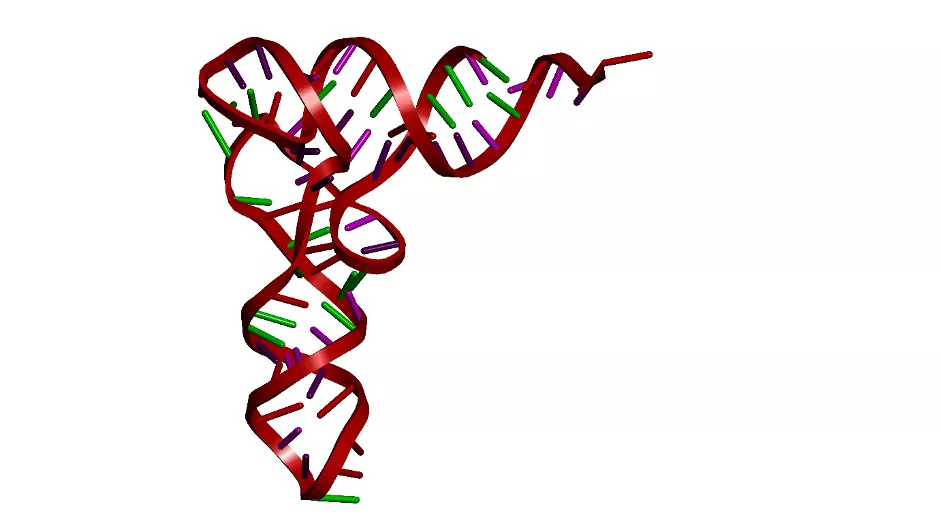With the help of a highly advanced computer simulation and under the academic leadership of Eörs Szathmáry, staff from the ELKH Centre for Ecological Research (ÖK) have for the first time demonstrated how chromosones could have formed at the dawn of terrestrial life. The discovery could fundamentally alter research into the origins of life. A study on this theory was recently published in PLOS Genetics.
There is perhaps no greater question in biology than how life began. To the best of our knowledge, life cannot be created without the transmission of information. From the very beginning, living organisms had to pass on information about the structure of their own bodies and the functioning of their life processes to members of the next generation. A broad scientific consensus has developed around the idea that the first hereditary material molecules were short and resembled today's RNA. RNA functions as both a hereditary material and as an enzyme, which means that it can control the molecular processes necessary for life.
In the beginning, these short RNA molecules, which functioned as primitive genes, were not linked to each other in the same way that genes in chromosones in the cells of today's living creatures are linked. The appearance of chromosones is a significant milestone in the evolution of life. But how did this leap occur?
"If genes move freely and replicate independently of each other, then some will inevitably be more successful than others, will multiply more quickly and will suppress the other genes. This would mean that the living creature as a whole cannot survive," says Eörs Szathmáry, the general director of ÖK.
"33 years ago, some Hungarians provided what is still today the most widely accepted solution to this problem: genes must be packaged in cells. This means that the genes have the same interests, and the destruction of the cell causes no advantage for any individual gene. You could say that they are all in the same boat and none of them benefit if the boat rocks too much," added the respected academic.
Though this idea may have provided an explanation for the origins of cellular organisms, how linked chromosones first came into being remained a mystery. A breakthrough was made when analysing the latter phenomenon in 1993 by English and Hungarian evolutionary biologists. By that point, the operation of ancient cells was being modeled with computers, which demonstrated that chromosones connected to genes were more successful as they reduced the competition of the genes inside the cells. Moreover, they also ensure that the genes sitting on the same chromosome are transferred together to the progeny cells that separate at division, so that the descendant is sure to contain all the genes necessary for survival.
Though the computer simulation may have been groundbreaking 27 years ago, there is no comparison between the computing capacity of these machines and those of the present day. As a result, the researchers recently further developed the experiment using a much more sophisticated algorithm, thus creating more realistic conditions, with the results further demonstrating the correctness of their theory.
“In the previous simulation, we did not take into account the effect of changes in the genetic stock, i.e. mutations, even though this phenomenon is one of the real drivers of evolution. The idea of the dose-effect relationship was also not part of the experiment. This dose-effect relationship simply means that the greater the amount of RNA enzymes contained in the cell, the faster it is able to make life processes work," continues Eörs Szathmáry, before adding that "now we have taken all of this into account, we have been able to really faithfully model the struggle of early cells, and the creation of chromosones within them. We saw which of the cells containing divergent creative elements were successful in the continual fight for survival."
Most of the mutations are harmful to the cells, meaning that they destroy their ability to survive. In fact, there may have been many parasitic genes in the genome of living creatures that multiplied to serve their own interests but which did not bring any benefit to the cells as a whole. It was therefore posited that those cells will be most successful that are most capable of defending themselves against harmful mutations. It was also clear from the experiment that cells containing chromosones are able to outperform their peers which do not contain chromosones.
The simulation allowed the genes to join, that is, to create chromosomes, but also to break them down, something which may often have occured frequently in the RNA world. It was found that, in line with the the dose-effect relationship, chromosomes in which several identical genes are linked spread throughout the population – that is, gene families emerged that actually exist today. What is more, the chromosones contained an identical, balanced quantity of genes that perform a variety of tasks. This meant that the scientists have shown that different genes are linked into chromosomes in an optimal number and proportion for the cell, and in a spontaneous manner.
"Our greatest finding was that we were able to show that cells are able to maintain more genes with the help of chromosones than without. This meant that more complex living beings could be created, and life could could appear in the form that we recognize today," summarises Eörs Szathmáry.

Proper spatial structure of chromosomes may have provided useful functions (illustration)
The study is freely accessible on the PLOS Genetics website.
For further information: szathmary.eors@gmail.com